Coastal Rewinds—Three days on Quadra Island with Rokkor lenses
Exploring Quadra Island’s rugged shores through vintage Rokkor lenses - May 10 2023
This is not a recent trip; in fact, it took place exactly two years ago, on May 10, 2023. Life has been challenging and chaotic since moving to Vancouver Island in late 2022. Like many photographers I’m sure, I found myself with a collection of unpublished photographs and handwritten notes about small trips and personal projects I had worked on. Every once in a while, I think about revisiting some of these past projects that never made it out of my Lightroom catalogue and sharing them here. I'm unsure if this will become a regular thing, but I'll see where it takes me.
Two years ago, we set aside some time for a long weekend to explore Quadra Island, just a short ferry ride from Campbell River. Instead of my trusty RF 24-70mm f/2.8 IS L lens, I chose to bring along something unexpected: a collection of vintage Minolta Rokkor lenses, which I used on both my Minolta SRT-101 loaded with Ilford FP4 Plus and adapted to my Canon R6. I had used some of these lenses for years, but one was new.
I first came across this lens when my brother handed it to me during my trip to France a few weeks earlier. Among some filters and a barely used Yashica-Mat was an old leather pouch containing a 58mm f/1.4 lens from my dad's 1971 SRT‑101. After thoroughly cleaning it and completing a self-taught repair session, I added that lens to my bag alongside a 28mm f/2.8 and a 135mm f/2.8. I left my 50mm f/1.4 at home since its focal length is very close to 58mm. This also helped lighten my bag, despite the presence of my EF 100-400mm lens, which I never leave behind for a good reason: wildlife photography on Vancouver Island, particularly of whales and eagles.
Cape Mudge Lighthouse - Shot on iPhone 13 Pro
Day 1: Nanaimo to Quadra
We took our time that morning, rolling into Campbell River just before lunch. After grabbing fish and chips at the harbour, overlooking a driftwood seal sculpture honouring the one-eyed seal that frequents the docks, we boarded the ferry to Quadra. By 2 pm, we drove south to Cape Mudge Lighthouse.
Once on the pebbly shores, I fumbled with my camera, hesitant to pull it from the bag until the light and composition seemed "perfect." I often do this, so focused on framing dramatic scenes that I forget the simple souvenirs: a weathered dock, a ferry ride, or that one‑eyed harbour seal whose driftwood sculpture guards the fish‑and‑chips stand. I would have loved to capture his silhouette gliding under the pier. Not every shot needs grand light. Some just need a story, even if shot with an iPhone on an overprocessed HEIC file. It is still better than nothing.
I rarely leave home without my EF 100-400mm
Back at Heriot Bay, we settled into our lodge on the southeast shore. After dinner, blue hour drew us to the quiet marina. The only sounds were lapping waves and clinking rigging. Since I only had Ilford FP4 loaded in the SRT‑101, I left it in the room and instead mounted the repaired 58mm Rokkor on the Canon R6.
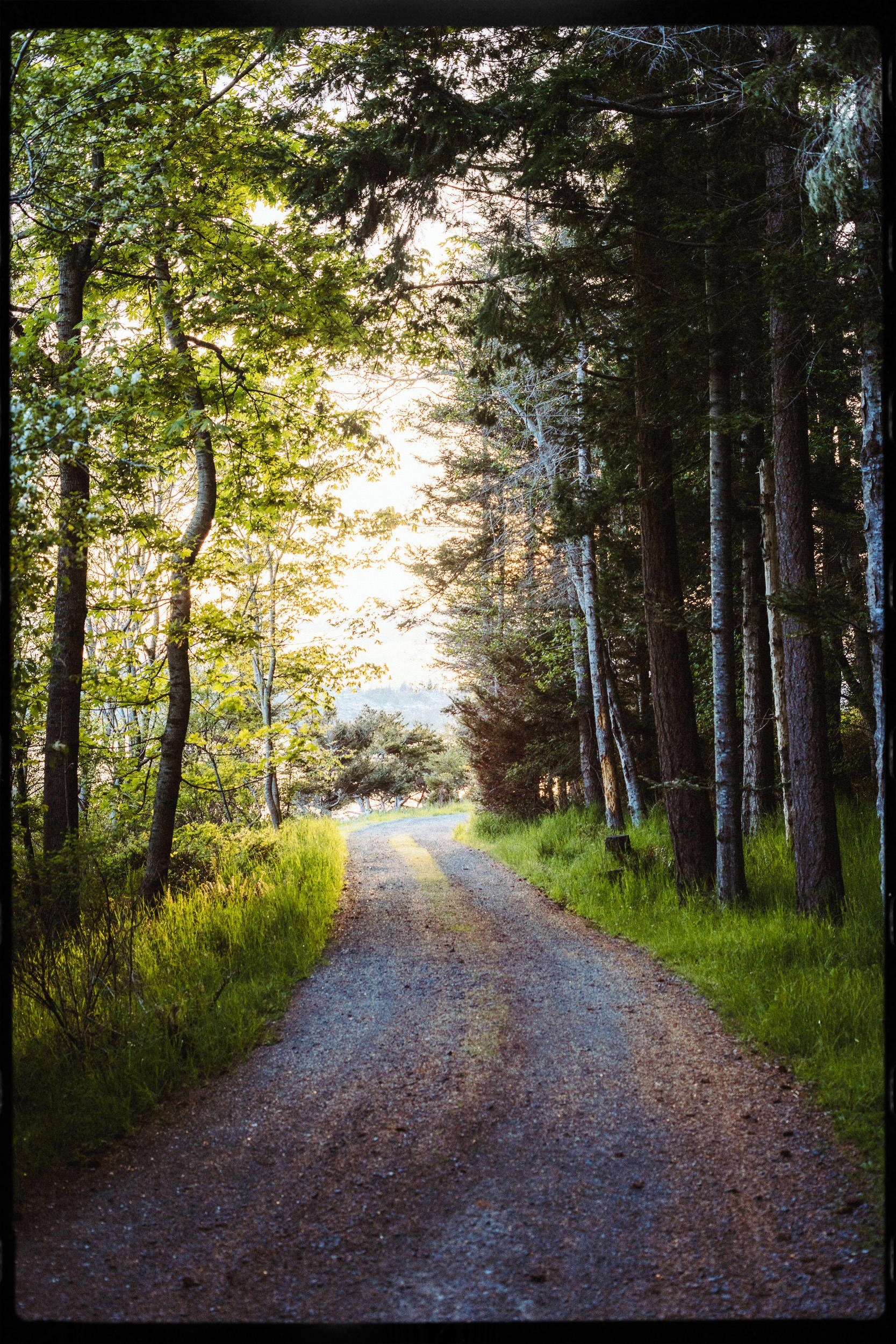
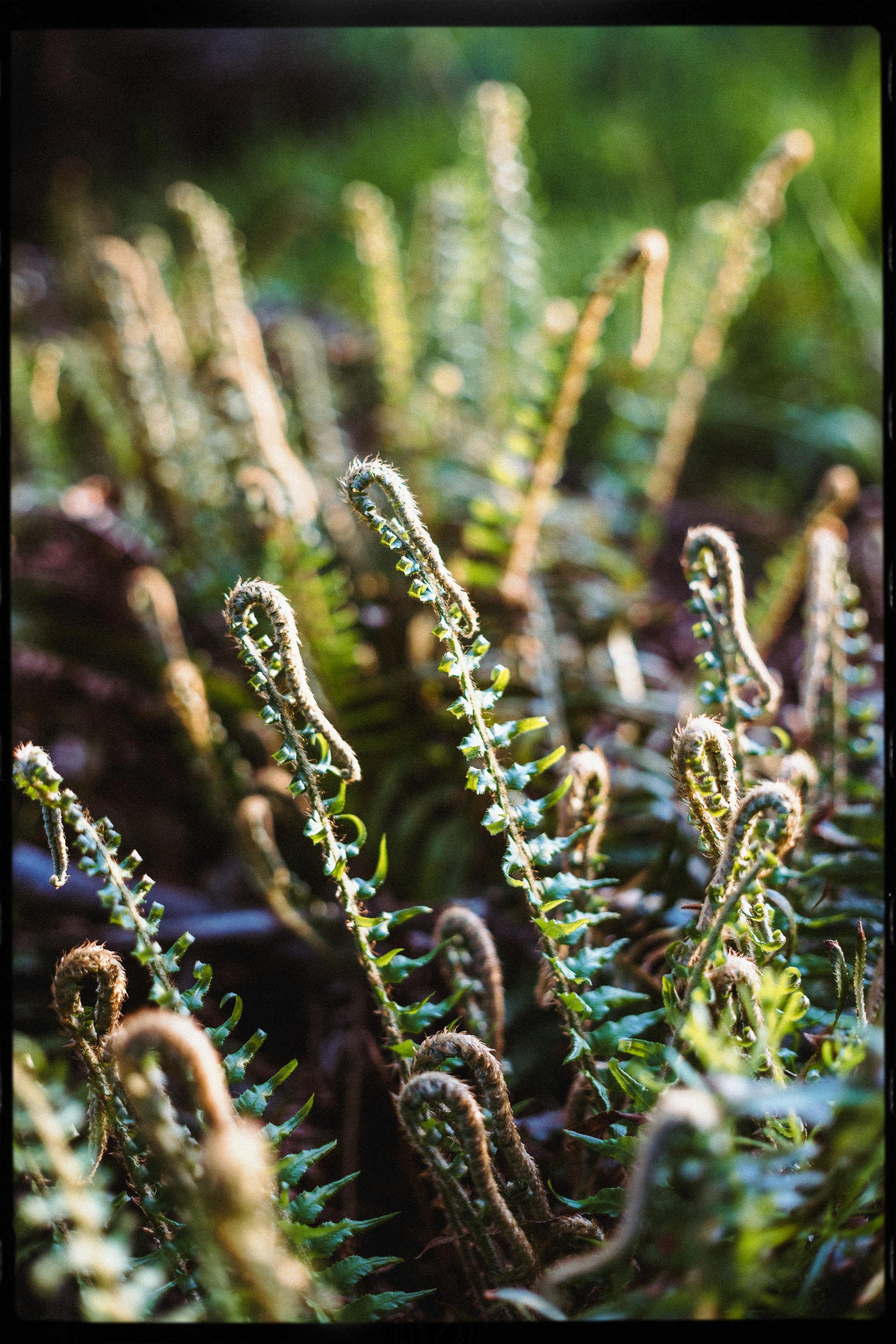
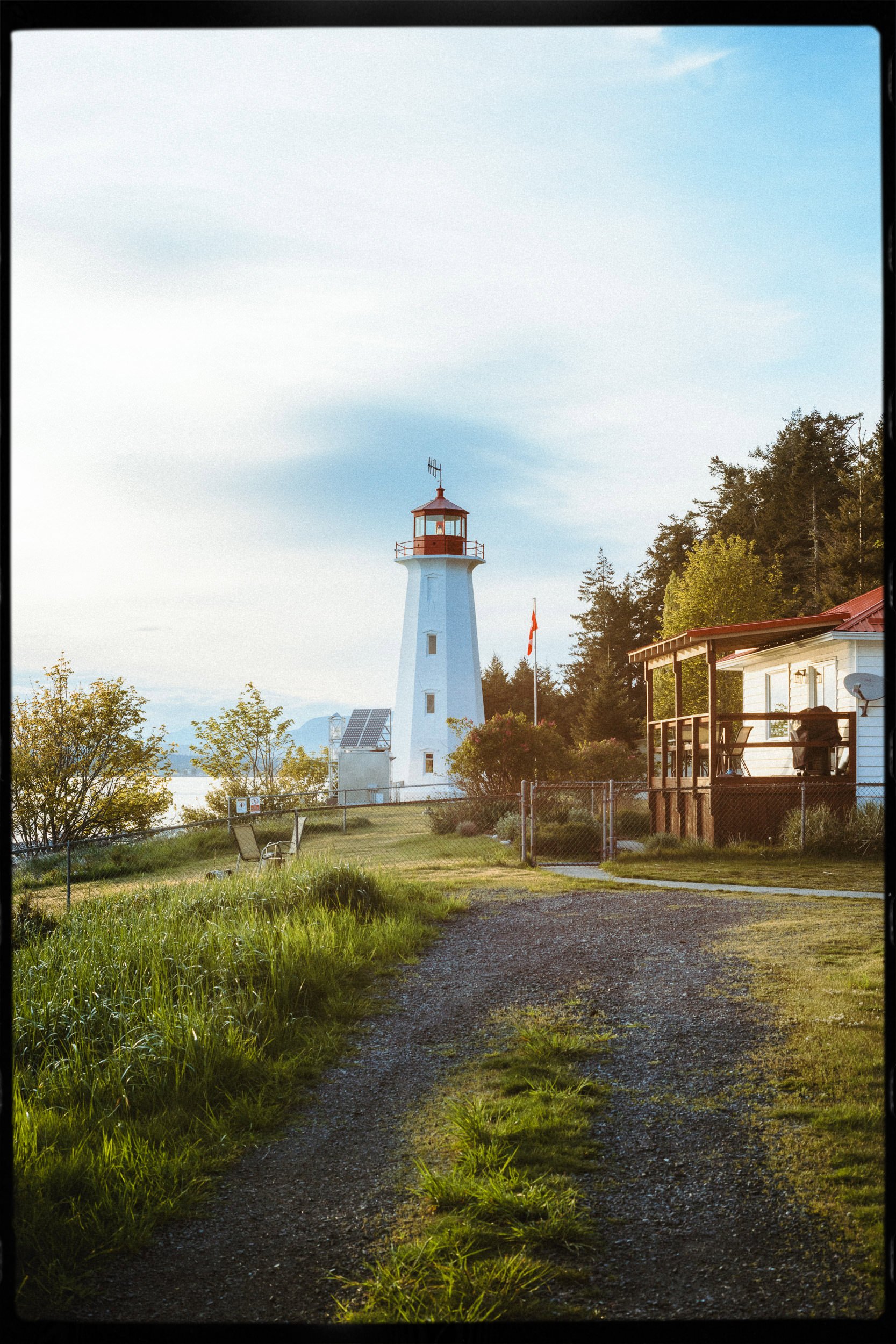
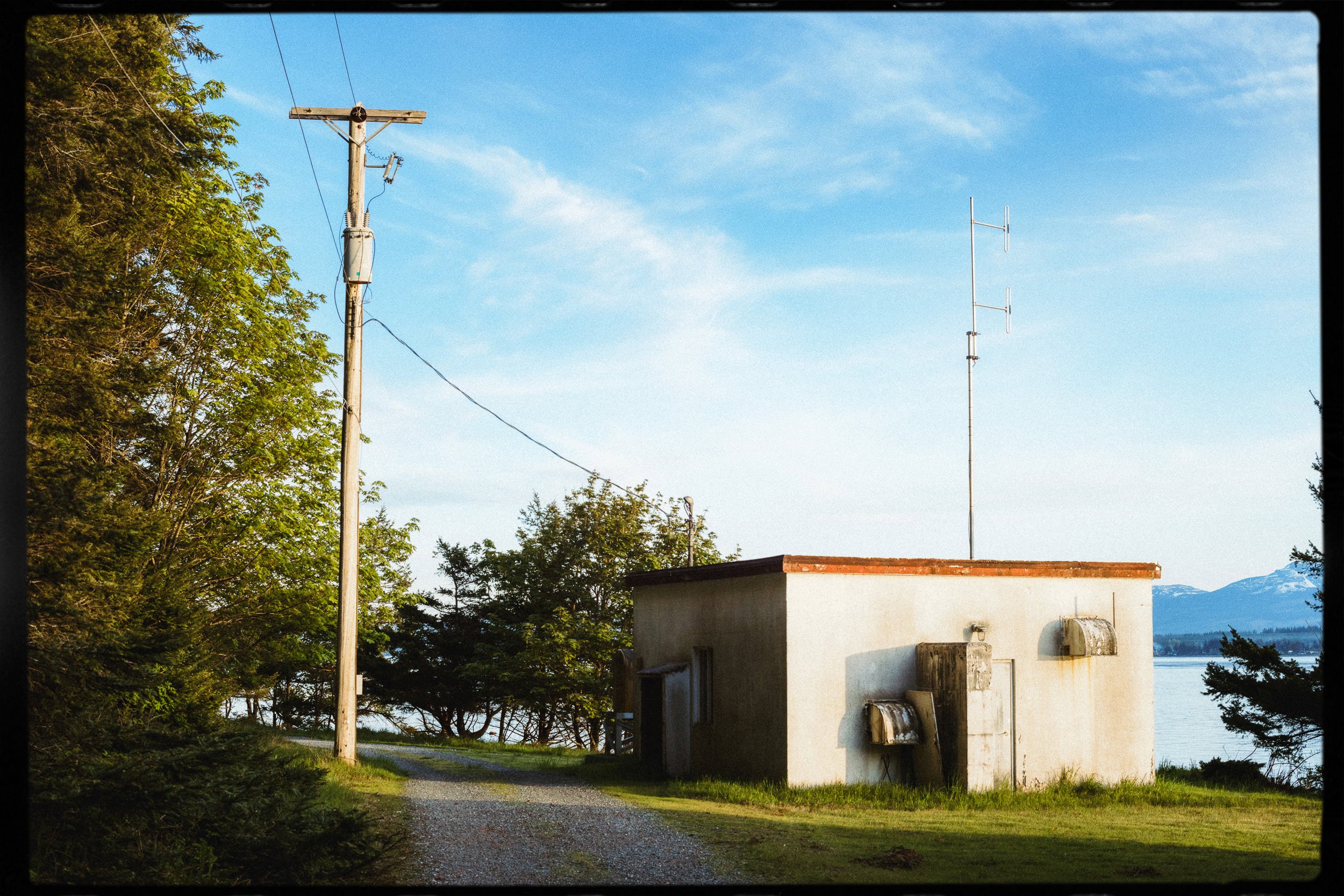
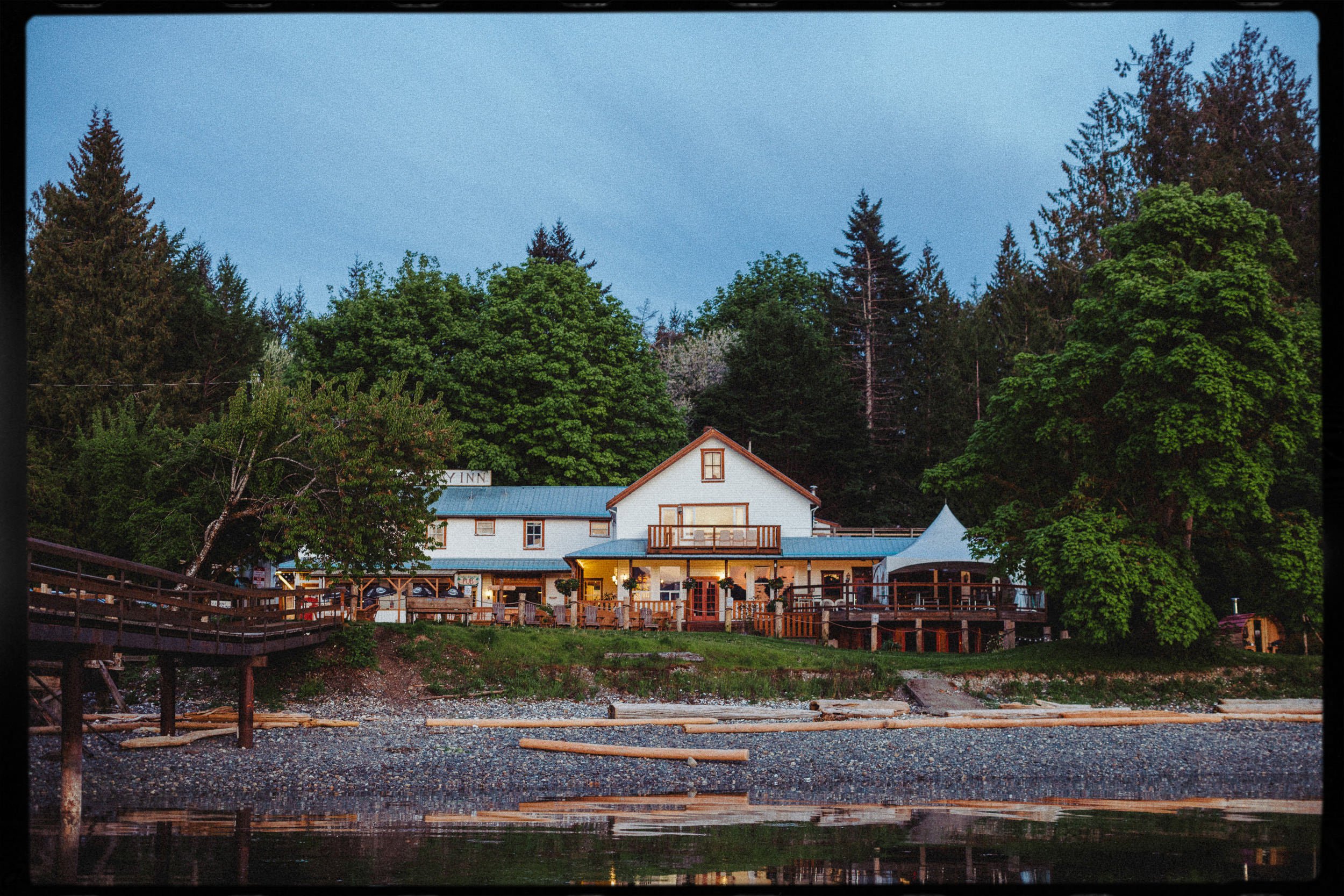
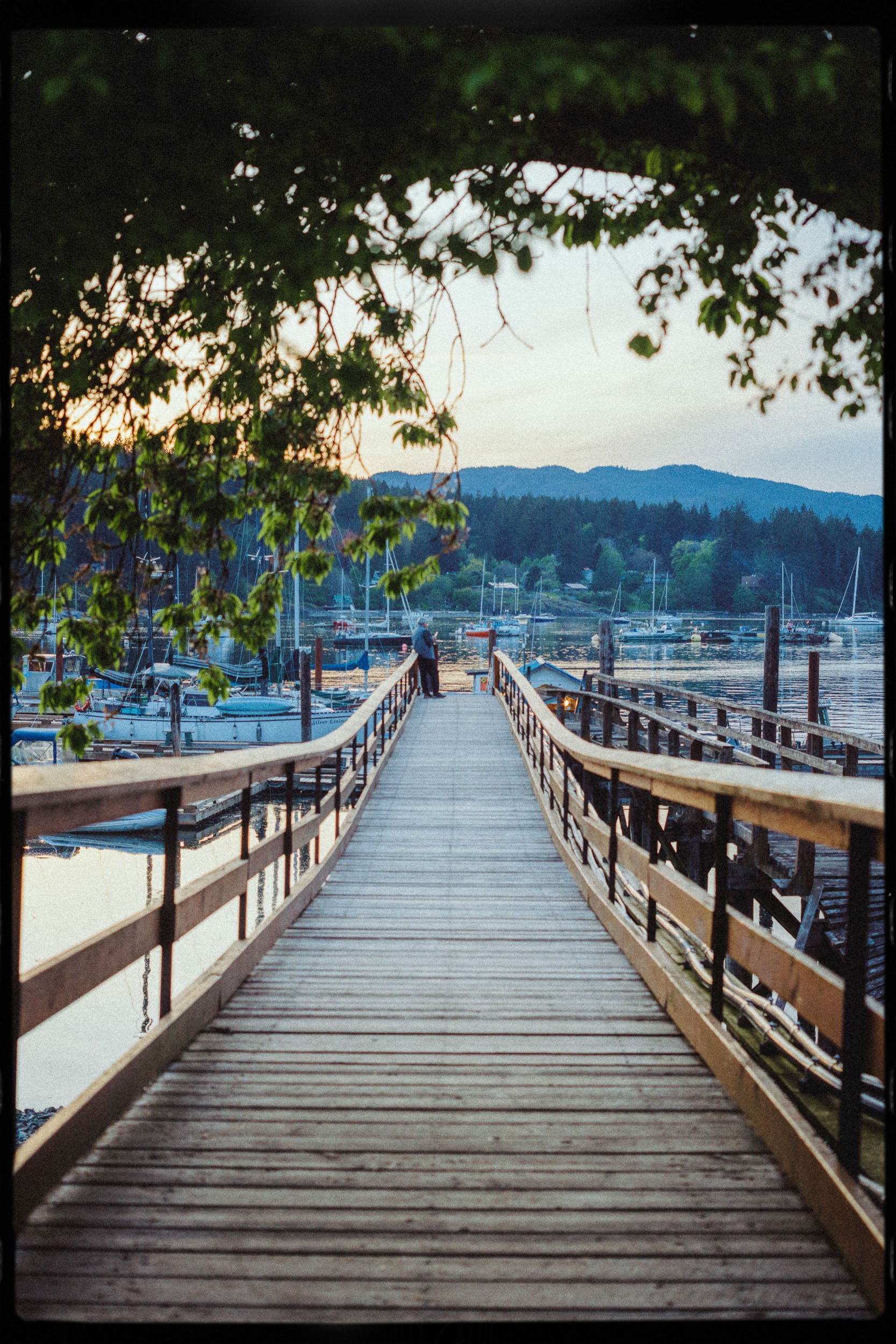
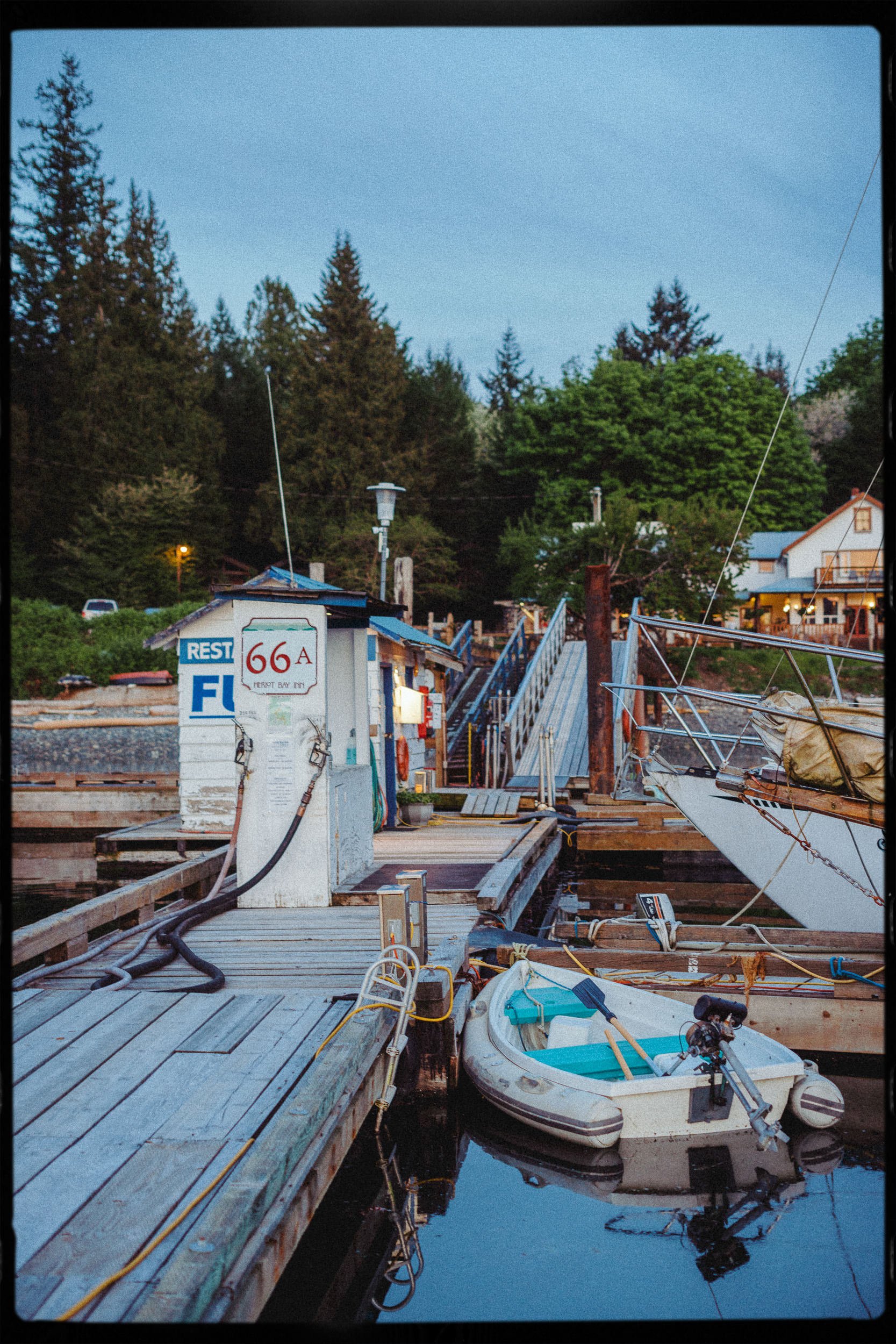
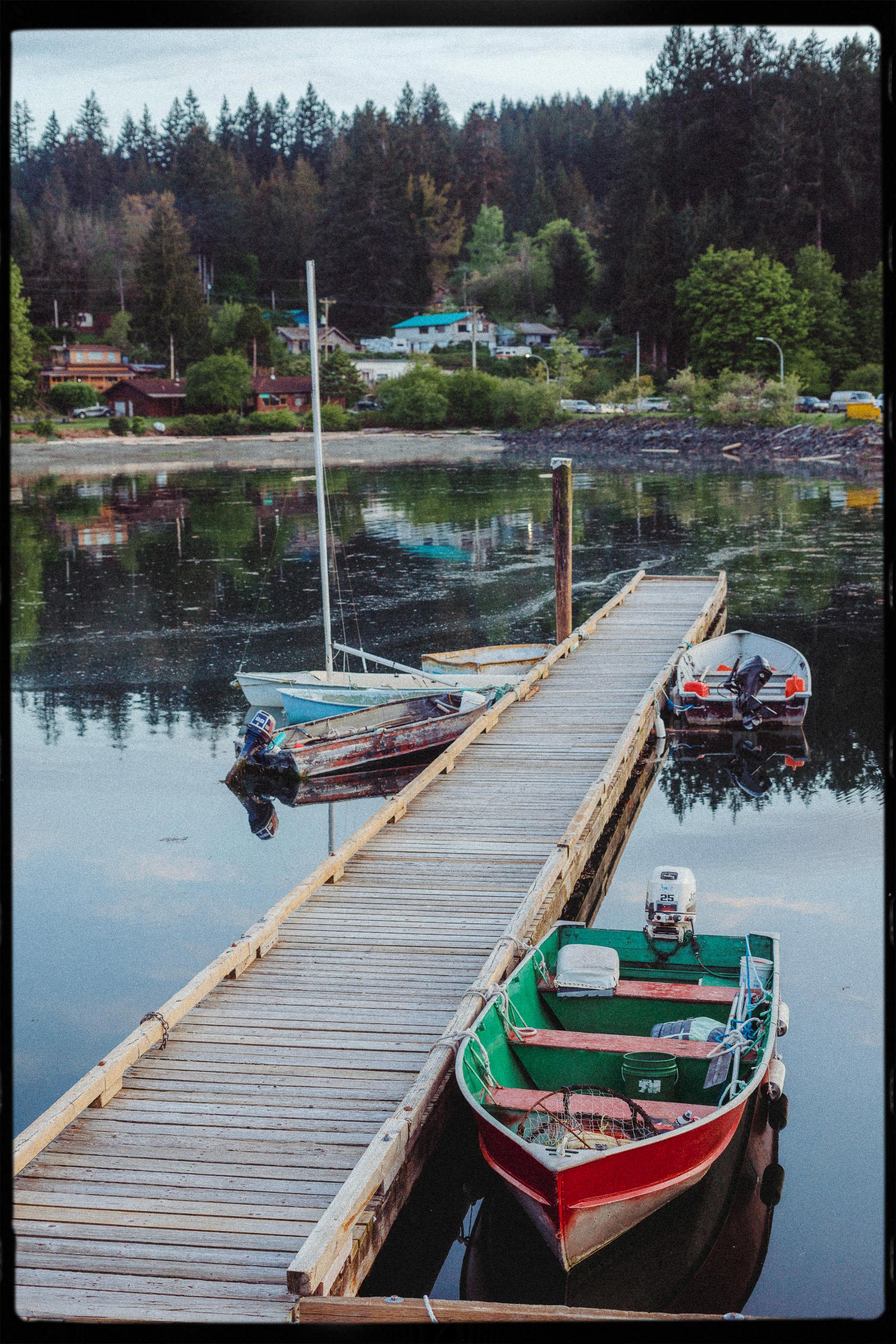
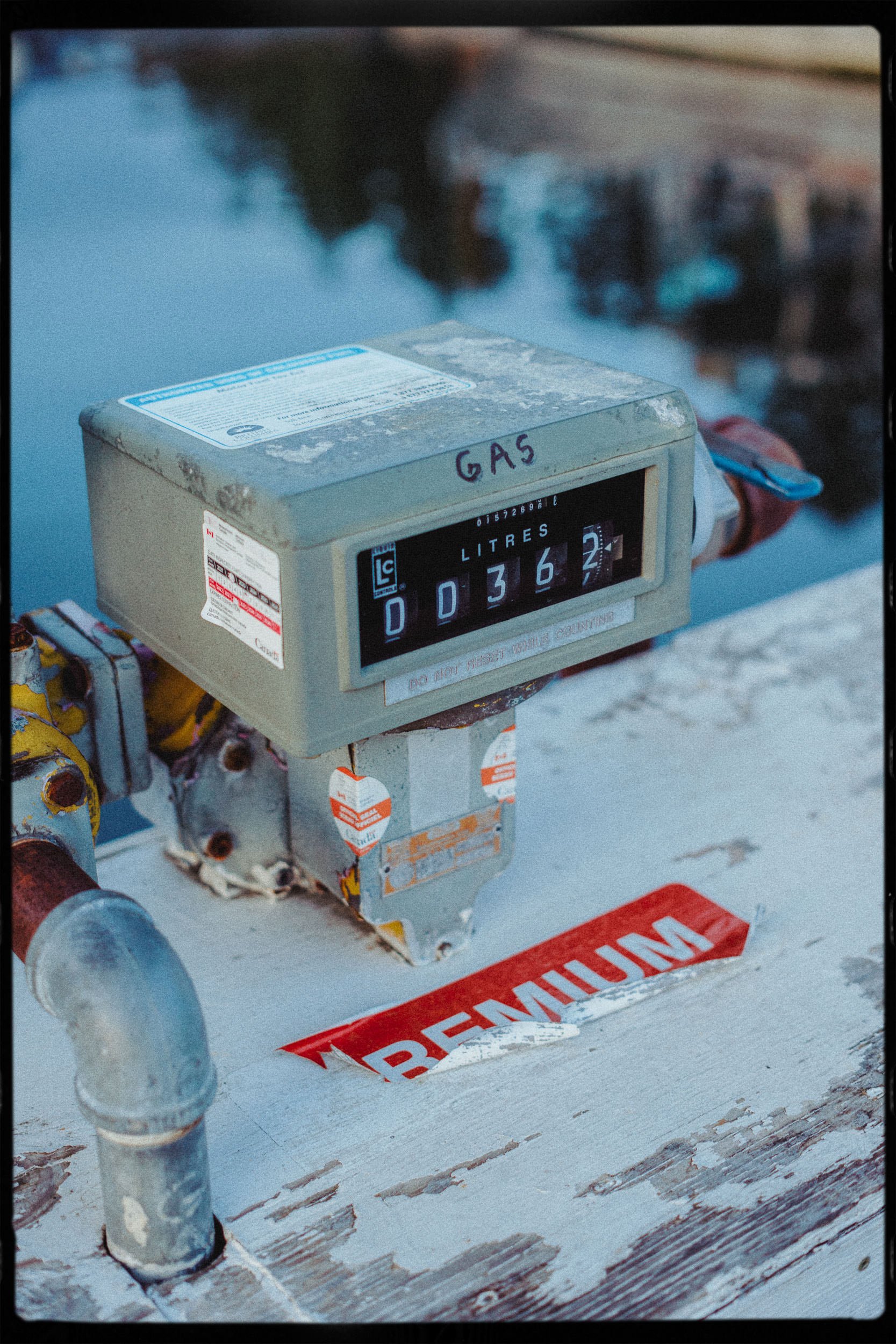
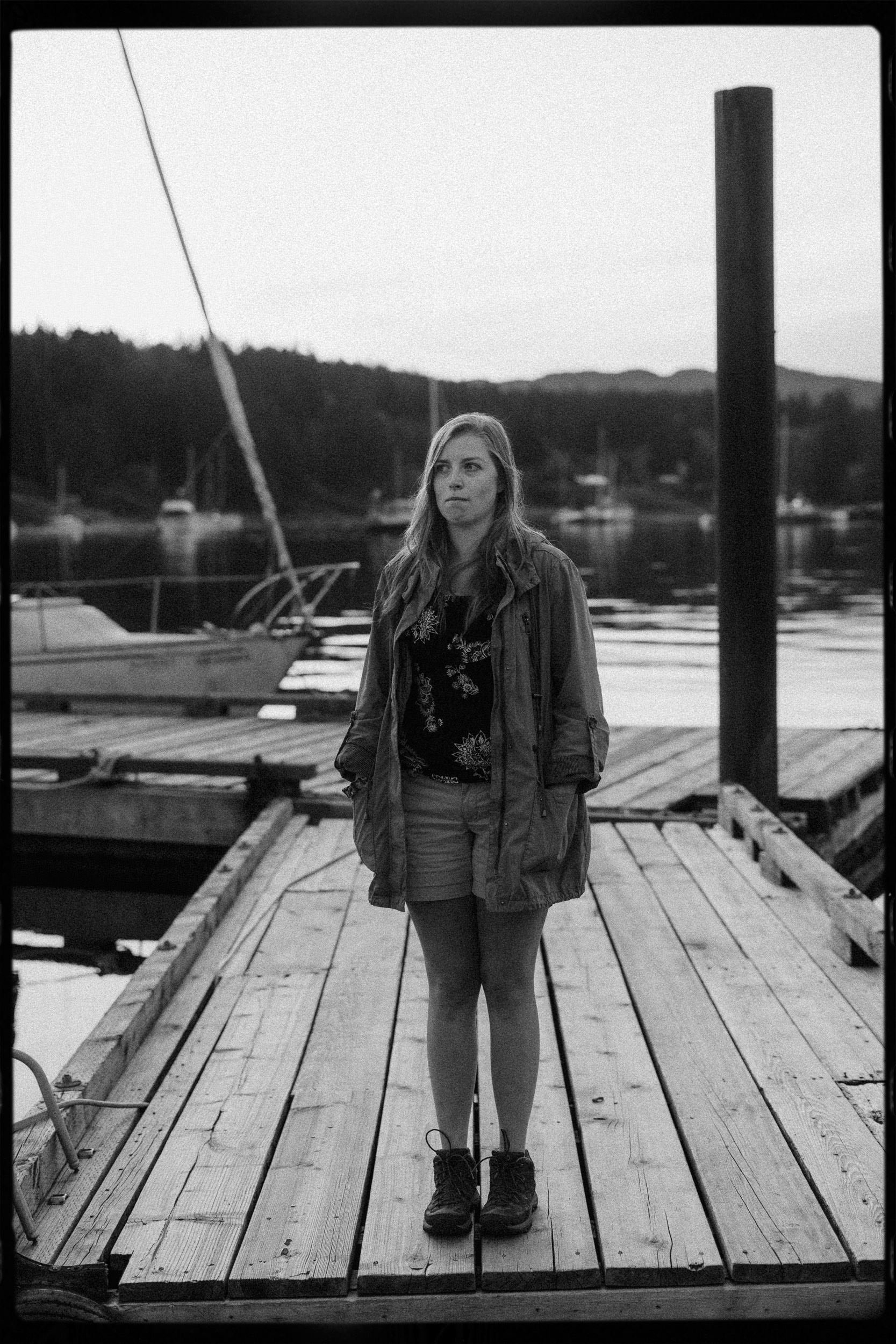
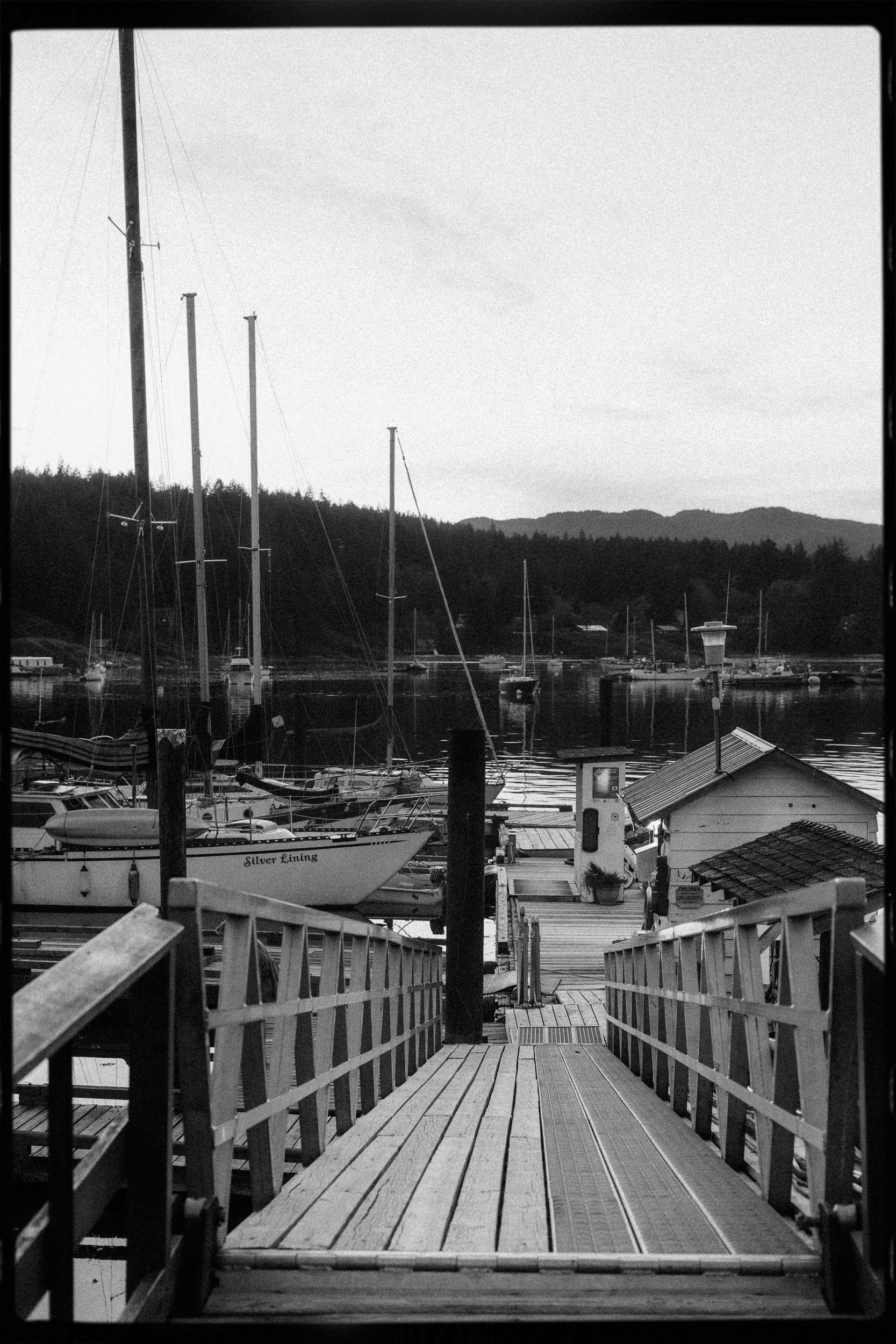
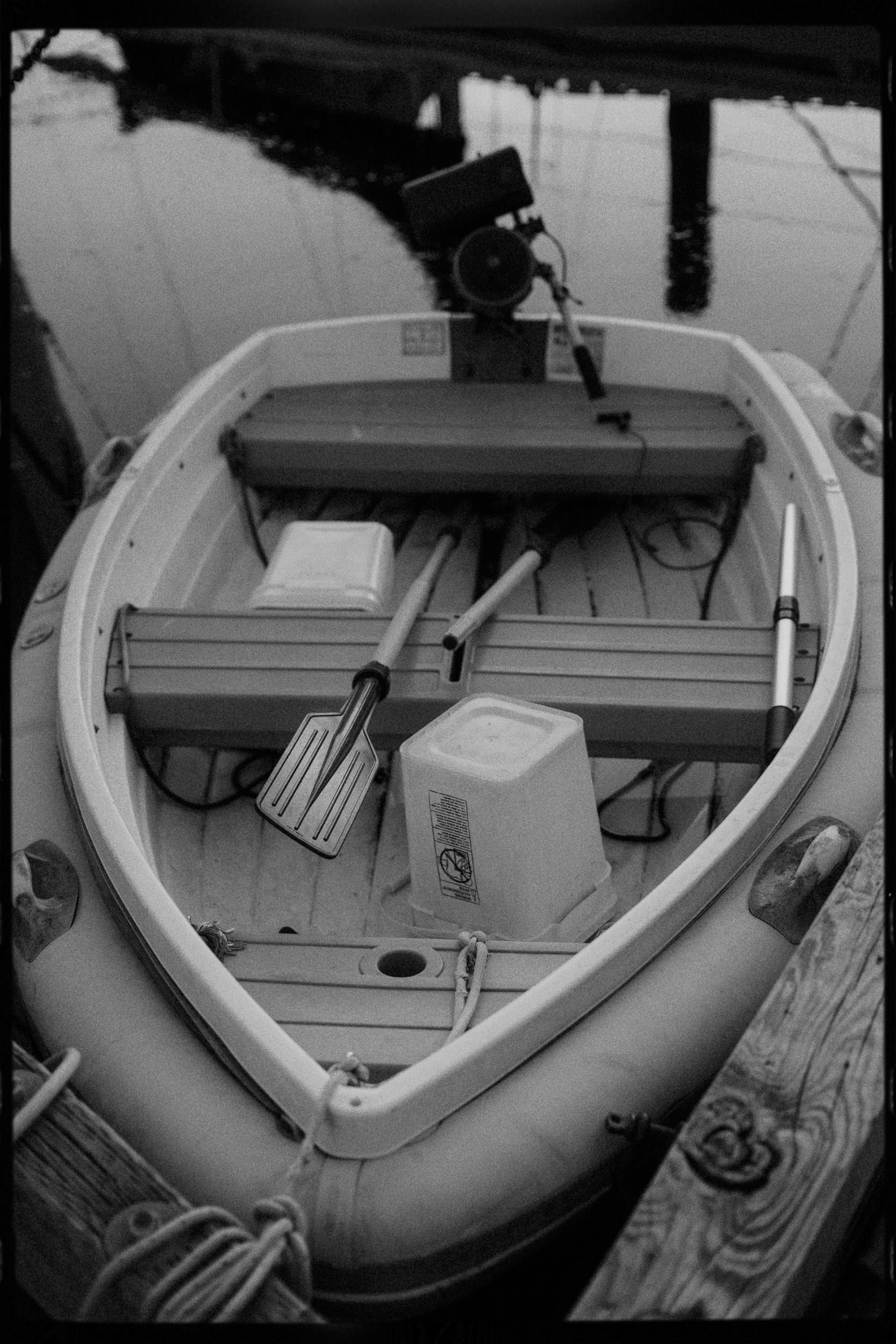

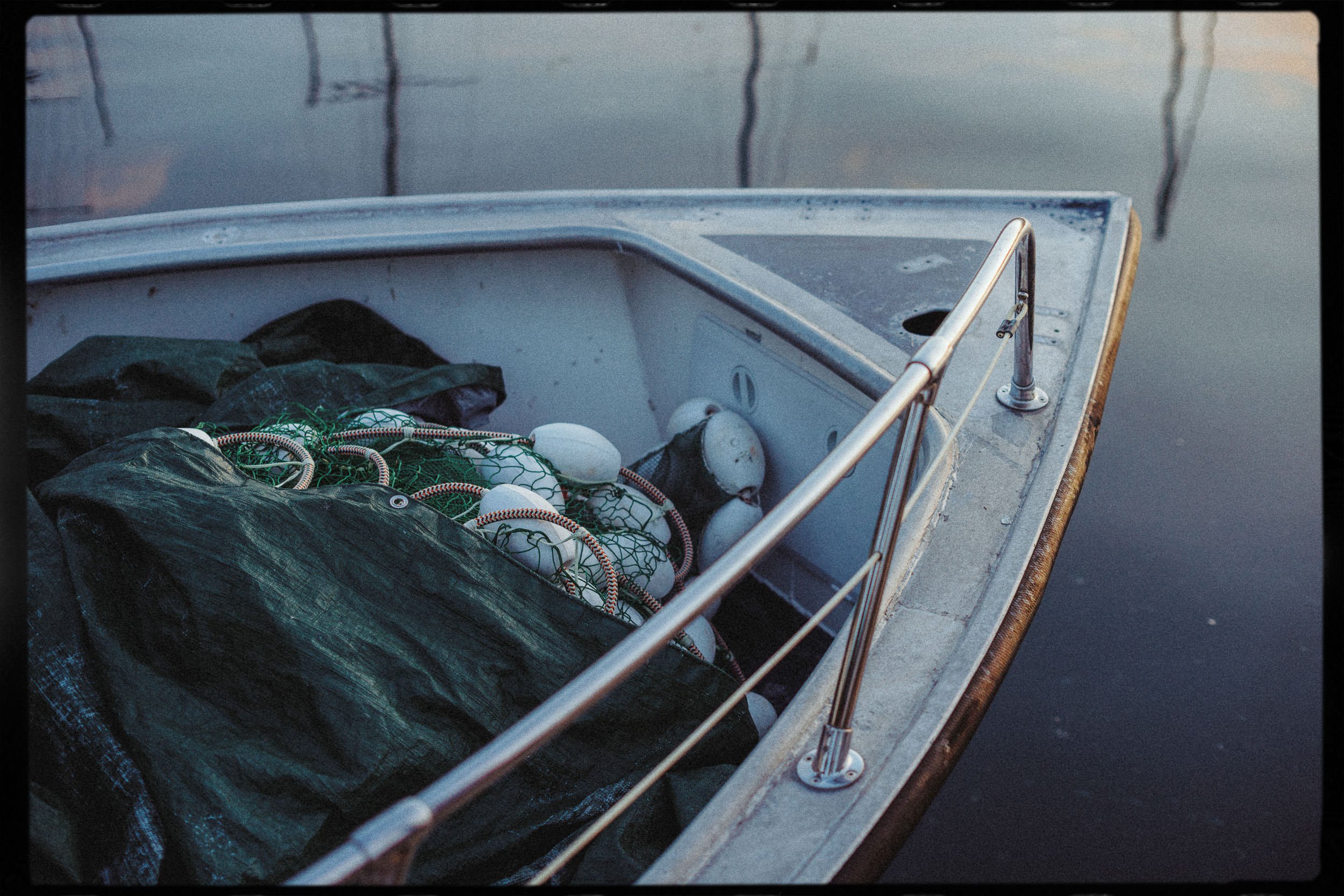
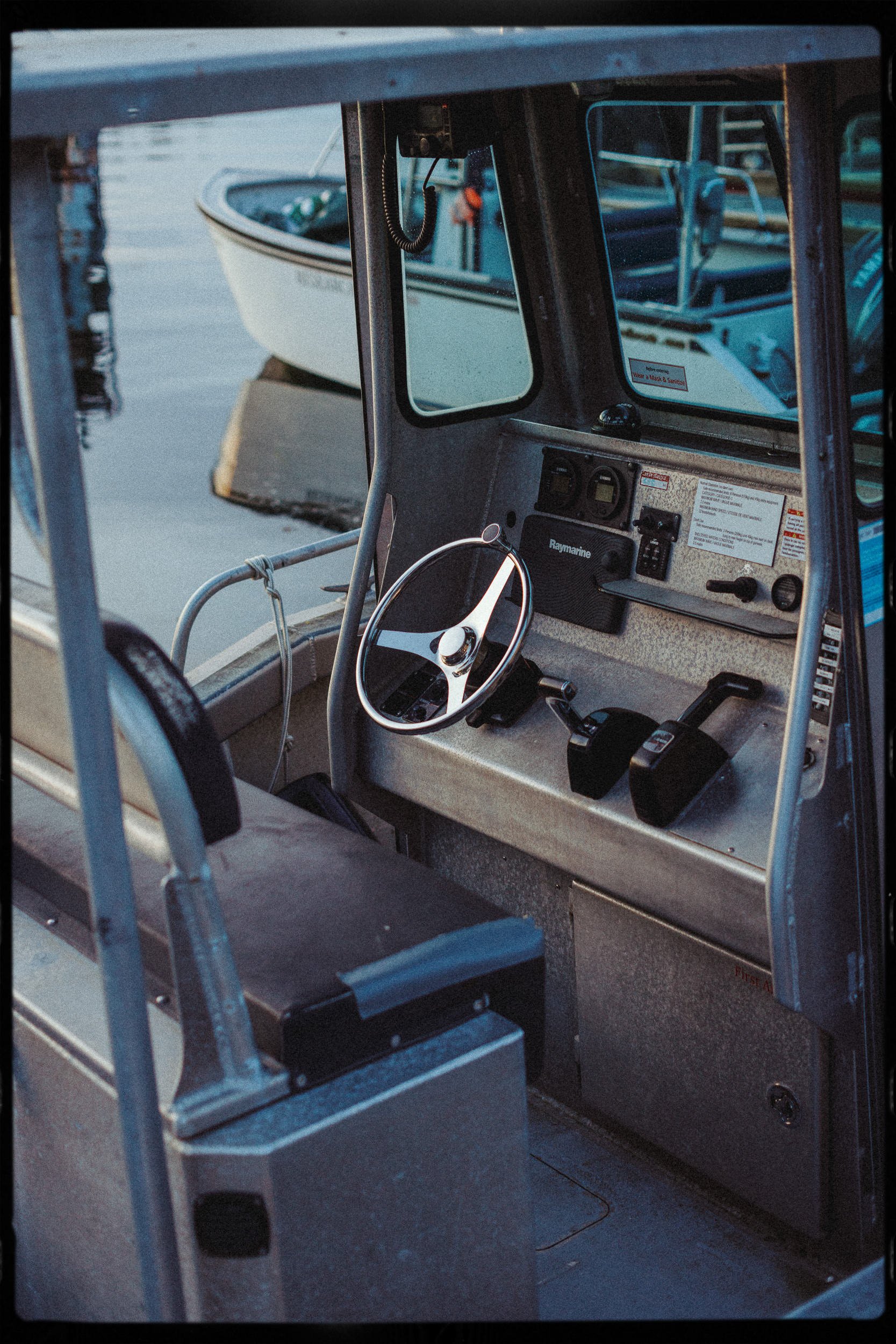
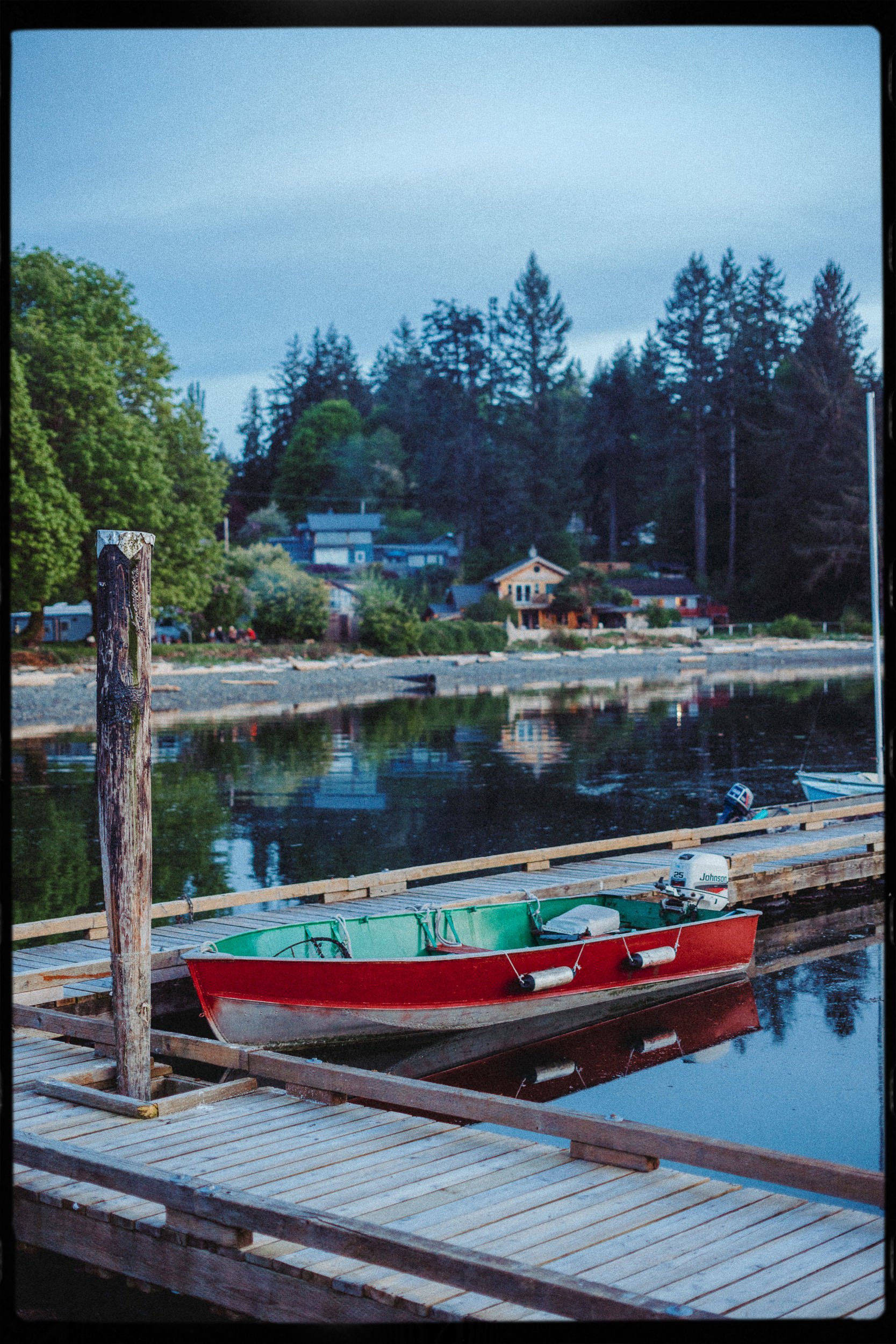
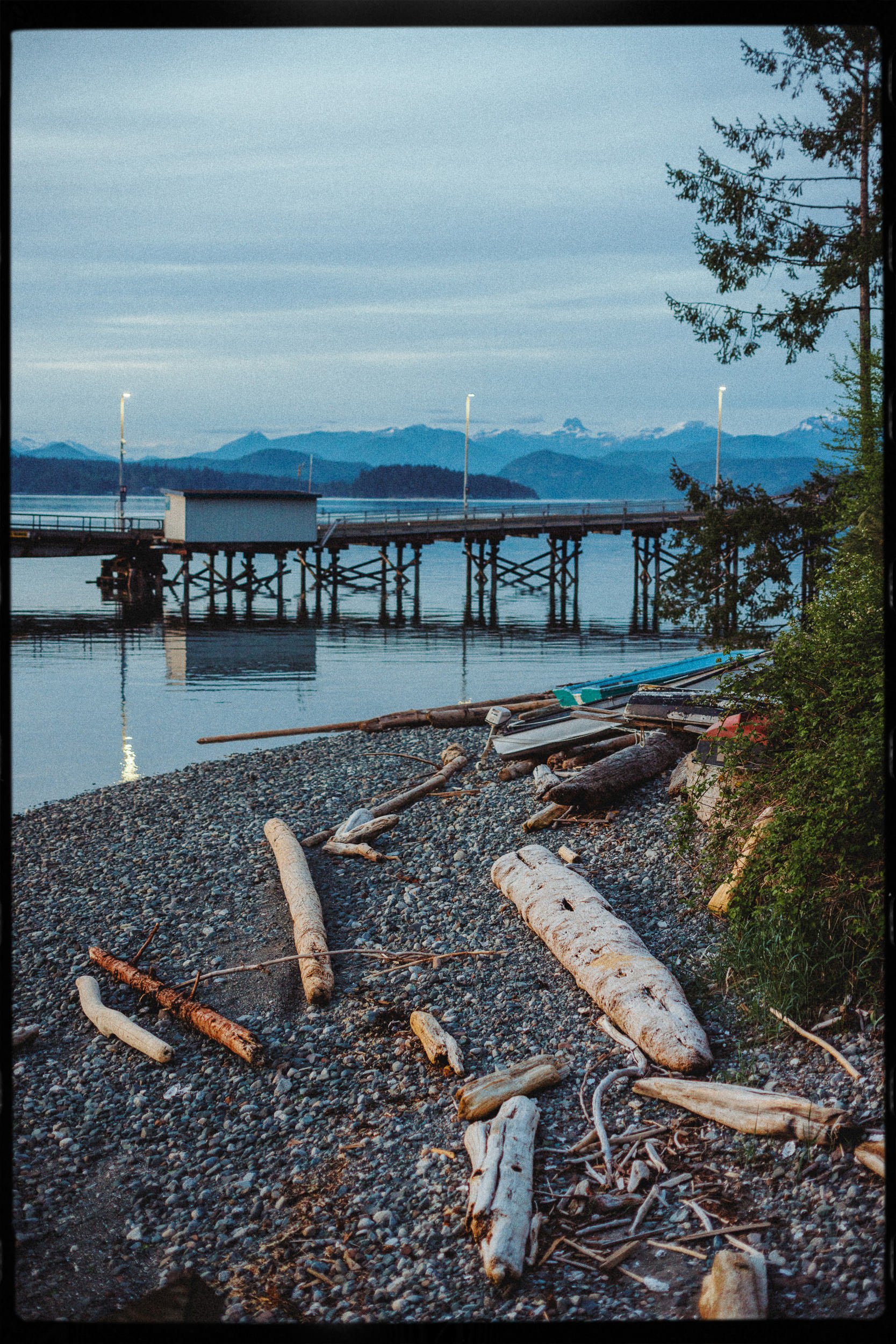
Day 2: Nothern Side of Quadra
Shellaligan Pass - Ilford FP4 Plus
Day two dawned clear. After packing our lunches, we headed to the Shellaligan Pass Trail. The forest opened onto a bluff overlooking a pebble beach where low tide revealed bones and shells clinging to mossy rocks. I continually switched between my 28mm and 58mm lenses on two different cameras, needing to unscrew and screw the polarizer on the R6 and the orange filter on the SRT‑101 each time. I started to feel that using the same sets of lenses on both systems was more cumbersome than I had expected.
I noticed that with a legacy lens mounted on my R6, I was shooting differently than when using digital zoom, but it wasn't quite the same as shooting on film. It felt like I was somewhere in between. The key difference was that digital allowed for experimentation, while film required careful deliberation, especially since I was limited to one roll that I had already started. Manual focusing slowed me down, and composing with prime lenses meant I had to use my feet to zoom in and out. In some ways, this approach let me blend elements of both digital and analog photography. Since I was mostly shooting landscapes, I was able to set the manual focus ring to the hard stop that indicated infinity. Or so I thought. The focus peaking feature on the R6 suggested otherwise. Initially, I suspected it might be a setting issue on the R6, so I continued to shoot normally.
Next, we drove north to Hoskyn Channel Landing and hiked to Surge Narrows. The channel's current whispered against colourful sea urchins and starfish latched on the rocks a few centimetres below the surface. I did not shoot much else, and instead, we decided to sit in silence for a while and just rest our minds.
That evening, we drove across Heriot Bay to Rebecca Spit Provincial Park, a wide double-sided beach filled with driftwood. Across the strait, we could see the gentle evergreen slopes and hills of Read Island and Cortes Island. I kept my eye peeled on the horizon for whales, but only silent seals bobbed just offshore under pastel skies.
Day 3: Quadra to Comox
I don't remember why we left Quadra Island by midday. On Vancouver Island, we reached Elk Falls Provincial Park, where we bounced on the bendy bridge, pausing to frame the waterfall below and through trees. As the sun played hide and seek with the clouds as allies, I couldn't think twice before pressing the shutter.
We continued our journey back home along the 19a coastal road, skirting highway boredom for winding turns and secret pullouts. By the evening, we stopped at Point Holmes. The sky cleared, the sunset painted the horizon molten gold while a few bald eagles danced above our heads. The 135mm Rokkor wouldn't cut it, and instead, I used the 100-400mm and the convenience of autofocus to capture the rather quick bird of prey.
Final Thoughts
When I finally reviewed these images, it became clear my focusing issues were not peaking fails but adapter flange errors. My first attempt to recalibrate the lens on the R6 only worsened things. The infinity mark fell short, so I tuned the lens on my Minolta SRT‑101 instead, where the mechanical stop aligned better. I still suspect the adapter is at fault here, but I cannot be 100% sure.
Two years on, my take on this trip remains unchanged: despite challenging myself with legacy primes, I look back and see no single shot that truly stands out. I thought the Rokkor lenses would force me to take a fresh perspective but in vain. What I lost to perfectionism—those spontaneous snapshots and everyday scenes—I still wish I had captured. Like many other times, this trip to Quadra Island taught me a final lesson: I need to reach for the camera sooner. Let go of only chasing the perfect light and trust that the moment itself can be enough.
DISCOVER EVERYTHING I USE TO ADAPT LEGACY LENSES
Disclaimer: when you purchase an item through these links, I might earn a small commission which helps supporting my work and keeping this website ad-free.
Thank you!






































